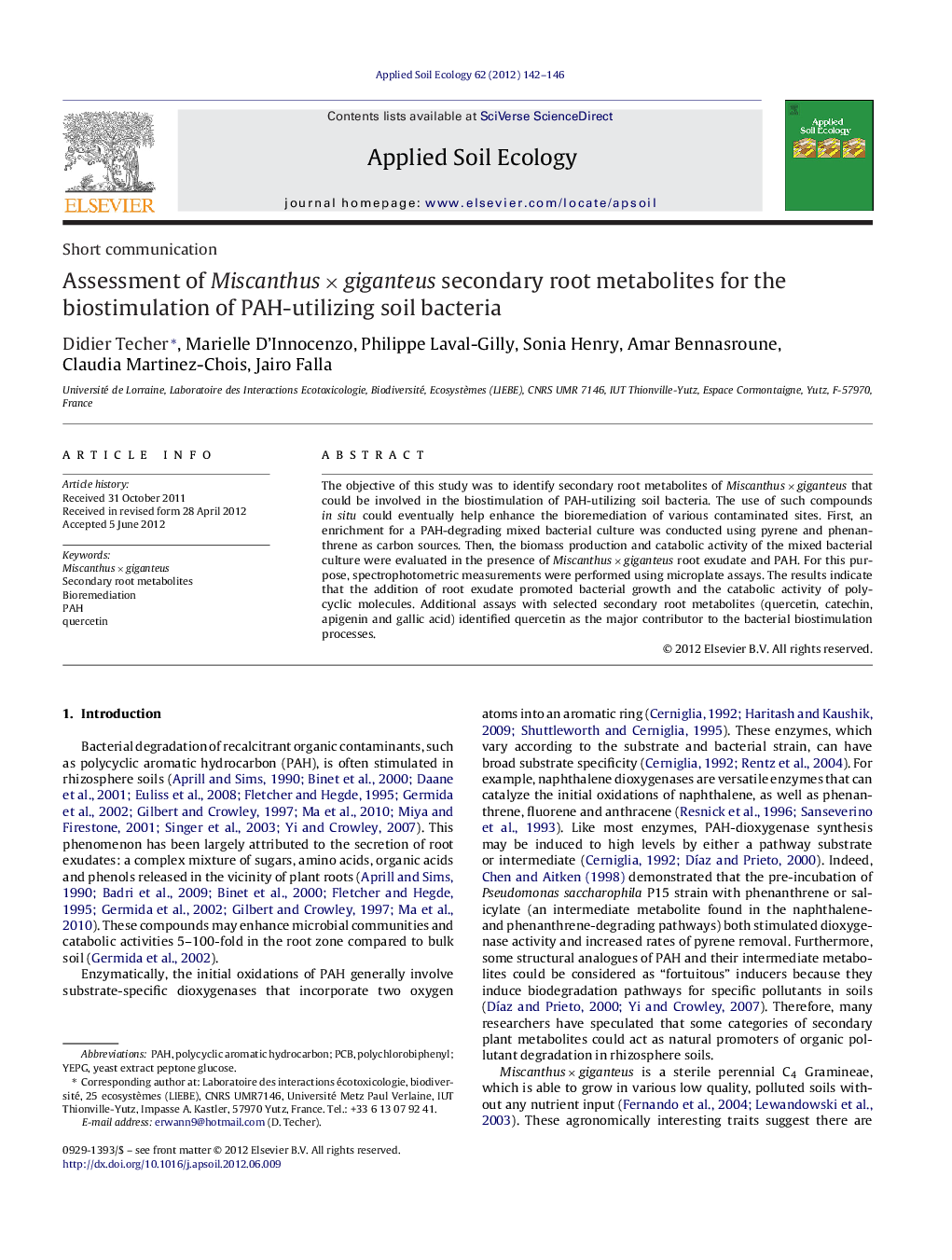| Article ID | Journal | Published Year | Pages | File Type |
|---|---|---|---|---|
| 4382504 | Applied Soil Ecology | 2012 | 5 Pages |
The objective of this study was to identify secondary root metabolites of Miscanthus × giganteus that could be involved in the biostimulation of PAH-utilizing soil bacteria. The use of such compounds in situ could eventually help enhance the bioremediation of various contaminated sites. First, an enrichment for a PAH-degrading mixed bacterial culture was conducted using pyrene and phenanthrene as carbon sources. Then, the biomass production and catabolic activity of the mixed bacterial culture were evaluated in the presence of Miscanthus × giganteus root exudate and PAH. For this purpose, spectrophotometric measurements were performed using microplate assays. The results indicate that the addition of root exudate promoted bacterial growth and the catabolic activity of polycyclic molecules. Additional assays with selected secondary root metabolites (quercetin, catechin, apigenin and gallic acid) identified quercetin as the major contributor to the bacterial biostimulation processes.
► Growth of PAH-utilizing mixed bacterial cultures can be enhanced in presence of Miscanthus × giganteus root exudates. ► Catabolic activity of polycyclic compounds increases in presence of root exudates. ► There are evidences for quercetin-induced biostimulation of PAH-degrading soil bacteria.
